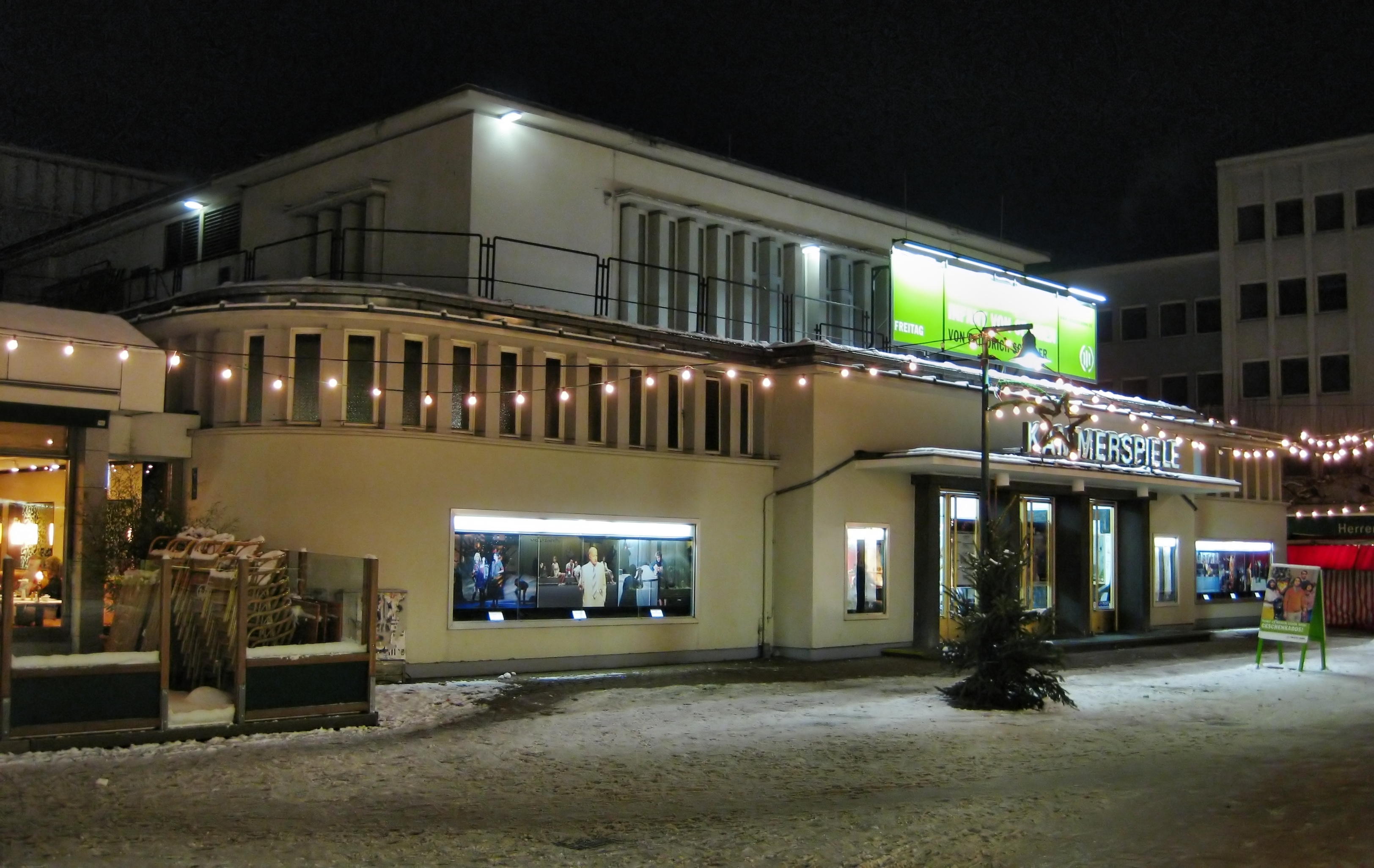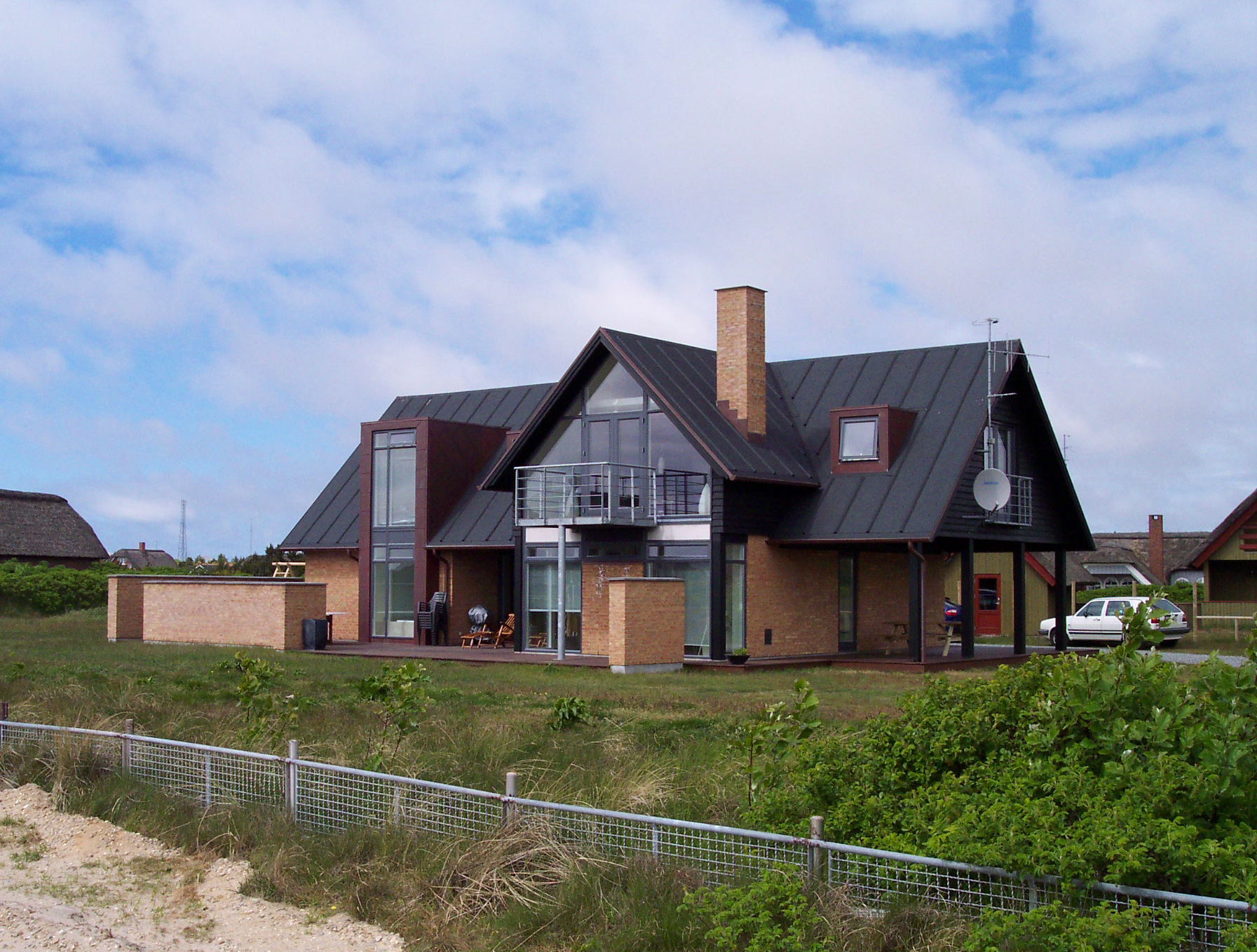|
Hans Klüppelberg
Hans Klüppelberg (25 May 1904 – 31 May 1962) was a German architect. Friedrich Lindau: ''Klüppelberg, Hans'', in ders.: ''Hannover. Wiederaufbau und Zerstörung. Die Stadt im Umgang mit ihrer bauhistorischen Identität'', 2., überarbeitete Auflage, Hannover: Schlütersche Verlagsgesellschaft, 2001, ; .; großteilonlineon Google Books Life Klüppelberg was born in 1904 in Moscow during the Czarist era, where his father worked as a civil engineer. In 1910, the family first moved to Remscheid, then to Hanover in 1912. There Hans Klüppelberg attended the until his Abitur in 1922. He then began a commercial apprenticeship, during which a doctor friend discovered Klüppelberg's talent for drawing. Thus, Klüppelberg came into contact with the architect Adolf Falke, who taught him how to draw. During this time, a lifelong fatherly friendship develops between the two men In 1924, Klüppelberg himself began studying architecture at the University of Hanover, where he complete ... [...More Info...] [...Related Items...] OR: [Wikipedia] [Google] [Baidu] |
Architect
An architect is a person who plans, designs and oversees the construction of buildings. To practice architecture means to provide services in connection with the design of buildings and the space within the site surrounding the buildings that have human occupancy or use as their principal purpose. Etymologically, the term architect derives from the Latin ''architectus'', which derives from the Greek (''arkhi-'', chief + ''tekton'', builder), i.e., chief builder. The professional requirements for architects vary from place to place. An architect's decisions affect public safety, and thus the architect must undergo specialized training consisting of advanced education and a ''practicum'' (or internship) for practical experience to earn a Occupational licensing, license to practice architecture. Practical, technical, and academic requirements for becoming an architect vary by jurisdiction, though the formal study of architecture in academic institutions has played a pivotal role in ... [...More Info...] [...Related Items...] OR: [Wikipedia] [Google] [Baidu] |
Ernst Huhn
Ernst Huhn (1894–1964) was a German architect who first rebuilt and later designed cinemas, theatres and inns, including the Schauspielhaus Bad Godesberg, Germany's first new theatre after the Second World War Life Huhn was one of the close collaborators of the architect Wilhelm Kreis for a long time during his Düsseldorf years (1908–1926). From the end of the 1920s, Huhn emerged, especially in the area of the Rhineland, as an architect for cinema and theatre buildings as well as inns. He worked in Düsseldorf and was a member of the Association of German Architects. He reported on some of his buildings in the trade journal '. Projects * 1926: Ice pavilion at the GeSoLei exhibition in Düsseldorf * 1928: Odeon cinema, rebuilding a ball room nn Düsseldorf-Unterbilk * 1928: Nationaltheater cinema, rebuilding the Kaiser-Friedrich-Halle in Viersen, Heierstraße 2 * 1935: Apollo-Theater (Siegen) * 1936: Capitol cinema in Bielefeld. * 1936: Rebuilding hotel in Cologn ... [...More Info...] [...Related Items...] OR: [Wikipedia] [Google] [Baidu] |
Architects From Hanover
An architect is a person who plans, designs and oversees the construction of buildings. To practice architecture means to provide services in connection with the design of buildings and the space within the site surrounding the buildings that have human occupancy or use as their principal purpose. Etymologically, the term architect derives from the Latin ''architectus'', which derives from the Greek (''arkhi-'', chief + ''tekton'', builder), i.e., chief builder. The professional requirements for architects vary from place to place. An architect's decisions affect public safety, and thus the architect must undergo specialized training consisting of advanced education and a ''practicum'' (or internship) for practical experience to earn a license to practice architecture. Practical, technical, and academic requirements for becoming an architect vary by jurisdiction, though the formal study of architecture in academic institutions has played a pivotal role in the development of the ... [...More Info...] [...Related Items...] OR: [Wikipedia] [Google] [Baidu] |
Single-family Detached Home
A stand-alone house (also called a single-detached dwelling, detached residence or detached house) is a free-standing residential building. It is sometimes referred to as a single-family home, as opposed to a multi-family residential dwelling. Definitions The definition of this type of house may vary between legal jurisdictions or statistical agencies. The definition, however, generally includes two elements: * Single-family (home, house, or dwelling) means that the building is usually occupied by just one household or family, and consists of just one dwelling unit or suite. In some jurisdictions allowances are made for basement suites or mother-in-law suites without changing the description from "single family". It does exclude, however, any short-term accommodation (hotel, motels, inns), large-scale rental accommodation ( rooming or boarding houses, apartments), or condominia. * Detached (house, home, or dwelling) means that the building does not share wall with oth ... [...More Info...] [...Related Items...] OR: [Wikipedia] [Google] [Baidu] |
Revenue House
A revenue house is a type of multi-family residential house with specific architecture which evolved in Europe during 18th–19th centuries and became a precursor of what is now known as a rental apartment house and a tenement. In various European countries this type of house was known as ''immeuble de rapport'', ''hôtel de rapport'' (France); ''inmueble de inversión'', ''inmueble de alquiler'' (Spain), (Russian Empire), etc. In France, the spreading of the revenue houses started since the reign of Louis XVI. Over time, it became a popular investment by real estate developers, which resulted in repeated use of the same type of façades and overall architecture of the buildings. The proliferation of this kind of property is responsible for the uniformity of the architecture of Paris The city of Paris has notable examples of architecture of every period, from the Middle Ages to the 21st century. It was the birthplace of the Gothic style, and has important monuments of the Frenc ... [...More Info...] [...Related Items...] OR: [Wikipedia] [Google] [Baidu] |
Hildesheimer Straße
Hildesheimer Straße is a main road in Hanover and the neighbouring town of Laatzen, Germany Germany,, officially the Federal Republic of Germany, is a country in Central Europe. It is the second most populous country in Europe after Russia, and the most populous member state of the European Union. Germany is situated betwe .... It is about 14 kilometers (9 miles) long and used by B Line of Hanover Stadtbahn. Connecting central Hanover to the districts in the south, it is one of Hanover's most important and most-used roads. The headquarters of some institutions and organisations line the northern end of Hildesheimer Straße, for example the Hanover regional administration. References Transport in Hanover Roads in Lower Saxony {{Germany-road-stub ... [...More Info...] [...Related Items...] OR: [Wikipedia] [Google] [Baidu] |
Klaus Mlynek
Klaus Mlynek (born 16 January 1936) is a German historian and scientific archivist. The long-term director of the Stadtarchiv Hannover is one of the editors and authors of the ', an encyclopedia of Hanover. Life Born in Poznań, Poland, Mlynek studied history, History of Christianity and history of law at the University of Jena and archival science at the , completing with the state examination (german: Staatsexamen) in 1957. The following year, he received his diploma as scientific archivist. The doctorate followed in 1961. After working at the and the archive of the German Academy of Sciences at Berlin from 1977 to 1997,The Stadtlexikon Hannover calls "1997" (back cover and p. 702), the database of the Gottfried Wilhelm Leibniz Library "1999" under the bibliography result: Karljosef Kreter, Gerhard Schneider (eds.): ''Stadt und Überlieferung. Commemorative publication for Klaus Mlynek'', in ', , Hanover 1999, Mylnek was director of the archives of Hanover. His focus of r ... [...More Info...] [...Related Items...] OR: [Wikipedia] [Google] [Baidu] |
Waldemar R
Waldemar, Valdemar or Woldemar is an Old High German given name. It consists of the elements ''wald-'' "power", "brightness" and ''-mar'' "fame". The name is considered the equivalent of the Slavic name Vladimir, Volodymyr, Uladzimir or Włodzimierz. The Old Norse form ''Valdamarr'' (also ''Valdarr'') occurs in the Guðrúnarkviða II as the name of a king of the Danes. The Old Norse form is also used in Heimskringla, in the story of Harald Hardrada, as the name of a ruler of Holmgard (Veliky Novgorod), in this case as a translation of the Slavic name ''Volodimer''.Alison Finlay (2004). ''Fagrskinna: A Catalogue of the Kings of Norway''. Brillp. 236 The ''Fagrskinna'' kings' sagas also have ''Valdamarr'' as the translation of Slavic ''Volodimer''/''Vladimir'', in reference to both Vladimir the Great and Vladimir Yaroslavovich. The German form was introduced to Scandinavia as ''Valdemar'' in the 12th century, with king Valdemar I of Denmark. People with the name Royalty * V ... [...More Info...] [...Related Items...] OR: [Wikipedia] [Google] [Baidu] |
Allied-occupied Germany
Germany was already de facto occupied by the Allies from the real fall of Nazi Germany in World War II on 8 May 1945 to the establishment of the East Germany on 7 October 1949. The Allies (United States, United Kingdom, Soviet Union, and France) asserted joint authority and sovereignty at the 1945 Berlin Declaration. At first, defining Allied-occupied Germany as all territories of the former German Reich before Nazi annexing Austria; however later in the 1945 Potsdam Conference of Allies, the Potsdam Agreement decided the new German border as it stands today. Said border gave Poland and the Soviet Union all regions of Germany (eastern parts of Pomerania, Neumark, Posen-West Prussia, Free City of Danzig, East-Prussia & Silesia) east of the Oder–Neisse line and divided the remaining "Germany as a whole" into the four occupation zones for administrative purposes under the three Western Allies (the United States, the United Kingdom, and France) and the Soviet Union. Although the ... [...More Info...] [...Related Items...] OR: [Wikipedia] [Google] [Baidu] |
Kröpcke
Kröpcke is the central square of the city of Hanover in Germany. The square is situated at the crossroads of Georgstraße, Karmarschstraße, Bahnhofstraße and Rathenaustraße. It is named after ''Wilhelm Kröpcke'', one of the owners of the former Café Robby, which was erected on the then-nameless square in 1869. Kröpcke leased the café in 1876, changed the business's name to ''Café Kröpcke'' and operated the café until 1919. Eventually, the square adopted the name from the café and in 1948 was officially named ''Kröpcke'' by the city of Hanover. One of its notable features is the Kröpcke clock, which is a 1977 replica of an 1885 clock that was scrapped after World War II. Stadtbahn station The station Kröpcke is the main station in the Hanover Stadtbahn network. It was built from 1968 to 1974 and opened in several parts through the 1970s and 1980s. At the time, it was one of Hanover's largest construction sites, extending more than underground. Today, all Stadt ... [...More Info...] [...Related Items...] OR: [Wikipedia] [Google] [Baidu] |



